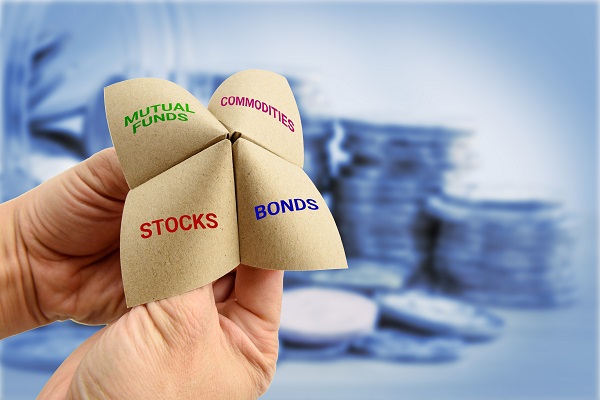Exploring the Basics of Futures and Options Trading in the Commodity Market
In the dynamic world of commodity trading, futures and options play pivotal roles, offering traders strategic tools to manage risk and speculate on price movements. Let’s delve into what futures and options are, how they differ, and their significance in commodity markets.
What are Futures?
Futures are standardized contracts that obligate the buyer to purchase and the seller to sell a specific quantity of a commodity at a predetermined price and date in the future. These contracts are traded on exchanges, providing liquidity and transparency to market participants. Key features of futures include:
- Standardization: Contracts have fixed sizes, expiration dates, and quality specifications, ensuring uniformity.
- Leverage: Traders can control large positions with a fraction of the total value, amplifying both potential profits and losses.
- Clearinghouse: Acts as a counterparty to both buyer and seller, mitigating credit risk.
Futures are used by hedgers to lock in prices and manage risk associated with price fluctuations. For instance, a farmer can hedge against falling prices by selling futures contracts on their crop.
Understanding Options
Options provide the buyer the right, but not the obligation, to buy (call option) or sell (put option) a commodity at a specified price (strike price) before or at expiration. Key aspects of options trading include:
- Flexibility: Unlike futures, options offer the freedom to choose whether to exercise the contract.
- Premium: Option buyers pay a premium to the seller for the right conveyed by the contract.
- Risk Management: Traders use options to hedge against adverse price movements or to speculate on market direction with limited risk.
Options trading involves predicting not only the direction of price movements but also their timing, making it a more complex instrument than futures.
Comparing Futures and Options
While both futures and options facilitate risk management and speculation, they differ fundamentally:
- Obligation: Futures obligate both parties to fulfill the contract, whereas options provide a right without obligation.
- Profit Potential: Futures offer unlimited profit potential (and losses), whereas options have capped losses limited to the premium paid.
- Purpose: Futures are favored for straightforward hedging, while options are versatile, catering to different risk profiles and strategies.
Role in Commodity Markets
Commodity markets rely on futures and options for price discovery and risk management across various sectors:
- Price Discovery: Futures prices reflect market sentiment and expectations, influencing spot prices and supply chain decisions.
- Risk Mitigation: Producers, consumers, and traders use derivatives to stabilize revenue and manage input costs amid volatile commodity prices.
- Speculation: Investors and speculators leverage derivatives for profit through directional bets on price movements.
Conclusion
Futures and options are integral to the functioning of commodity markets, offering tools for hedging, speculation, and price discovery. Understanding these instruments empowers traders to navigate volatility and capitalize on opportunities while managing risk effectively. Whether you’re a farmer protecting crop prices or an investor speculating on oil prices, mastering futures and options can enhance your ability to thrive in commodity trading.
3.5
Technical Analysis Commodity TradingChatGPT
Title: The Role of Technical Analysis in Commodity Trading
Headline: Harnessing Technical Analysis for Effective Commodity Market Strategies
Technical analysis is a cornerstone of successful commodity trading, providing traders with invaluable insights into market trends, price patterns, and potential entry and exit points. Let’s explore how technical analysis is used in commodity trading and its significance in making informed trading decisions.
What is Technical Analysis?
Technical analysis involves studying historical price and volume data to forecast future price movements. It operates on the premise that market trends, patterns, and behaviors repeat over time. Key components of technical analysis include:
- Price Charts: Visual representations of price movements over time, ranging from simple line charts to complex candlestick patterns.
- Indicators: Mathematical calculations applied to price and volume data to identify trends, momentum, volatility, and other trading signals.
- Support and Resistance Levels: Price levels where a commodity tends to find buying (support) or selling (resistance) pressure.

Techniques in Technical Analysis
1. Trend Analysis
- Identifying Trends: Using trendlines and moving averages to determine the direction of price movements (uptrend, downtrend, or sideways).
- Trend Confirmation: Analyzing higher highs, lower lows, and trend reversals to validate trend strength.
2. Chart Patterns
- Reversal Patterns: Such as head and shoulders, double tops/bottoms, indicating potential trend reversals.
- Continuation Patterns: Like flags, pennants, and triangles, suggesting a pause before the continuation of the prevailing trend.
3. Technical Indicators
- Momentum Indicators: Such as Relative Strength Index (RSI) and Moving Average Convergence Divergence (MACD), gauging the speed and strength of price movements.
- Volatility Indicators: Like Bollinger Bands, measuring price fluctuations over time.
Application in Commodity Trading
1. Entry and Exit Points
- Technical analysis helps traders pinpoint optimal entry points (buy signals) and exit points (sell signals) based on price patterns and indicators.
- Example: A trader may use a breakout above a resistance level confirmed by increasing volume as a signal to enter a long position in crude oil.
2. Risk Management
- Setting stop-loss orders based on support levels identified through technical analysis helps manage downside risk.
- Example: Placing a stop-loss below a key support level identified on a gold price chart to limit potential losses.
3. Decision Support Tool
- Technical analysis acts as a decision support tool, providing traders with objective data-driven insights amidst market noise and sentiment.
- Example: Using trendlines and moving averages to filter out short-term price fluctuations and focus on long-term trends in agricultural commodities.
Conclusion
Technical analysis is essential for commodity traders seeking to navigate volatile markets and make informed decisions. By analyzing price charts, identifying trends, and leveraging indicators, traders can enhance their ability to anticipate market movements and optimize trading strategies. While no method guarantees success, incorporating technical analysis into a comprehensive trading plan equips traders with valuable tools to manage risk and capitalize on opportunities in commodity markets effectively.

